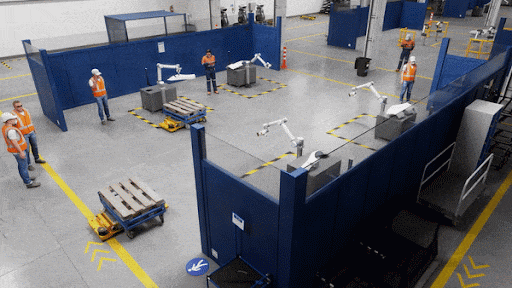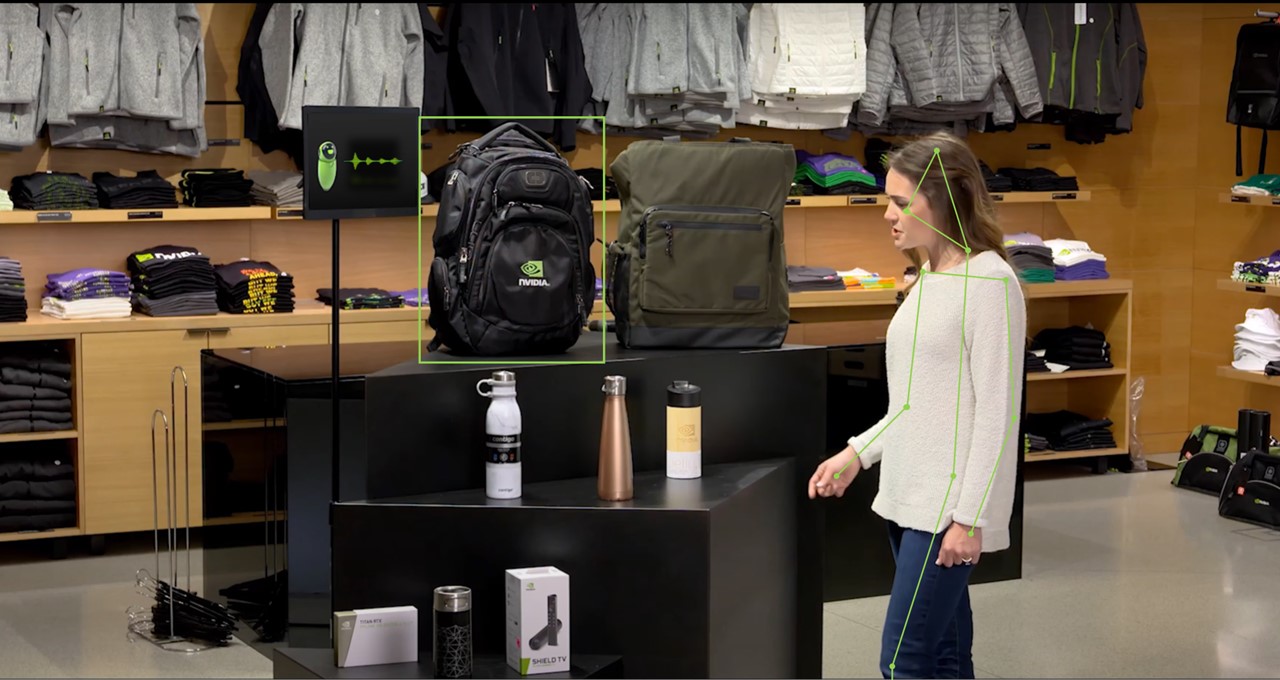With the state of the world under constant flux in 2022, some technology trends were put on hold while others were accelerated. Supply chain challenges, labor shortages and economic uncertainty had companies reevaluating their budgets for new technology.
For many organizations, AI is viewed as the solution to a lot of the uncertainty bringing improved efficiency, differentiation, automation and reduced cost.
Until now, AI computing has operated almost exclusively in the cloud. But increasingly diverse streams of data are being generated around the clock from sensors at the edge. These require real-time inference, which is leading more AI deployments to move to edge computing.
For airports, stores, hospitals and more, AI brings advanced efficiency, automation and even cost reduction, which is why edge AI adoption accelerated last year.
In 2023, expect to see a similarly challenging environment, which will drive the following edge AI trends.
1. Focus on AI Use Cases With High ROI
Return on investment is always an important factor for technology purchases. But with companies looking for new ways to reduce cost and gain a competitive advantage, expect AI projects to become more common.
A few years ago, AI was often viewed as experimental, but, according to research from IBM, 35% of companies today report using AI in their business, and an additional 42% report they’re exploring AI. Edge AI use cases, in particular, can help increase efficiency and reduce cost, making them a compelling place to focus new investments.
For example, supermarkets and big box stores are investing heavily in AI at self-checkout machines to reduce loss from theft and human error. With solutions that can detect errors with 98% accuracy, companies can quickly see a return of investment in a matter of months.
AI industrial inspection also has an immediate return, helping augment human inspectors on factory lines. Bootstrapped with synthetic data, AI can detect defects at a much higher rate and address a variety of defects that simply cannot be captured manually, resulting in more products with fewer false negative or positive detections.
2. Growth in Human and Machine Collaboration
Often seen as a far-off use case of edge AI, the use of intelligent machines and autonomous robots is on the rise. From automated distribution facilities to meet the demands of same-day deliveries, to robots monitoring grocery stores for spills and stock outs, to robot arms working alongside humans on a production line, these intelligent machines are becoming more common.
According to Gartner, the use of robotics and intelligent machines is expected to grow significantly by the end of the decade. “By 2030, 80% of humans will engage with smart robots on a daily basis, due to smart robot advancements in intelligence, social interactions and human augmentation capabilities, up from less than 10% today.” (Gartner, “Emerging Technologies: AI Roadmap for Smart Robots — Journey to a Super Intelligent Humanoid Robot”, G00761328, June 2022)
For this future to happen, one area of focus that needs attention in 2023 is aiding human and machine collaboration. Automated processes benefit from the strength and repeatable actions performed by robots, leaving humans to perform specialized and dexterous tasks that are more suited to our skills. Expect organizations to invest more in this human-machine collaboration in 2023 as a way to alleviate labor shortages and supply chain issues.

3. New AI Use Cases for Safety
Related to the trend of human and machine collaboration is that of AI functional safety. First seen in autonomous vehicles, more companies are looking to use AI to add proactive and flexible safety measures to industrial environments.
Historically, functional safety has been applied in industrial environments in a binary way, with the primary role of the safety function to immediately stop the equipment from causing any harm or damage when an event is triggered. AI, on the other hand, works in combination with context awareness to predict an event happening. This allows AI to proactively send alerts regarding future potential safety events, preventing the events before they happen, which can drastically reduce safety incidents and related downtime in industrial environments.
New functional safety standards that define the use of AI in safety are expected to be released in 2023 and will open the door for early adoption in factories, warehouses, agricultural use cases and more. One of the first areas for AI safety adoption will focus on improved worker safety, including worker posture detection, falling object prevention and personal protection equipment detection.
4. IT Focus on Cybersecurity at the Edge
Cyber attacks rose 50% in 2021 and haven’t slowed down since, making this a top focus for IT organizations. Edge computing, particularly when combined with AI use cases, can increase cybersecurity risk for many organizations by creating a wider attack surface outside of the traditional data center and its firewalls.
Edge AI in industries like manufacturing, energy, and transportation requires IT teams to expand their security footprint into environments traditionally managed by operational technology teams. Operational technology teams typically focus on operational efficiency as their main metric, relying on air-gapped systems with no network connectivity to the outside world. Edge AI use cases will start to break down these restrictions, requiring IT to enable cloud connectivity while still maintaining strict security standards.
With billions of devices and sensors around the world that will all be connected to the internet, IT organizations have to both protect edge devices from direct attack and consider network and cloud security. In 2023, expect to see AI applied to cybersecurity. Log data generated from IoT networks can now be fed through intelligent security models that can flag suspicious behavior and notify security teams to take action.
5. Connecting Digital Twins to the Edge
The term digital twin refers to perfectly synchronized, physically accurate virtual representations of real-world assets, processes or environments. Last year, NVIDIA partnered with Siemens to enable industrial metaverse use cases, helping customers accelerate their adoption of industrial automation technologies. Leading companies spanning manufacturing, retail, consumer packaged goods and telco, such as BMW, Lowe’s, PepsiCo and Heavy.AI, have also begun building operational digital twins allowing them to simulate and optimize their production environments.
What connects digital twins to the physical world and edge computing is the explosion of IoT sensors and data that is driving both these trends. In 2023, we’ll see organizations increasingly connect live data from their physical environment into their virtual simulations. They’ll move away from historical data-based simulations toward a live, digital environment — a true digital twin.
By connecting live data from the physical world to their digital twins, organizations can gain real-time insight into their environment, allowing them to make faster and more informed decisions. While still early, expect to see massive growth in this space next year for ecosystem providers and in customer adoption.
The Year of Edge AI
While the 2023 economic environment remains uncertain, edge AI will certainly be an area of investment for organizations looking to drive automation and efficiency. Many of the trends we saw take off last year continue to accelerate with the new focus on initiatives that help drive sales, reduce costs, grow customer satisfaction and enhance operational efficiency.
Visit NVIDIA’s Edge Computing Solutions page to learn more about edge AI and how we’re helping organizations implement it in their environments today.
